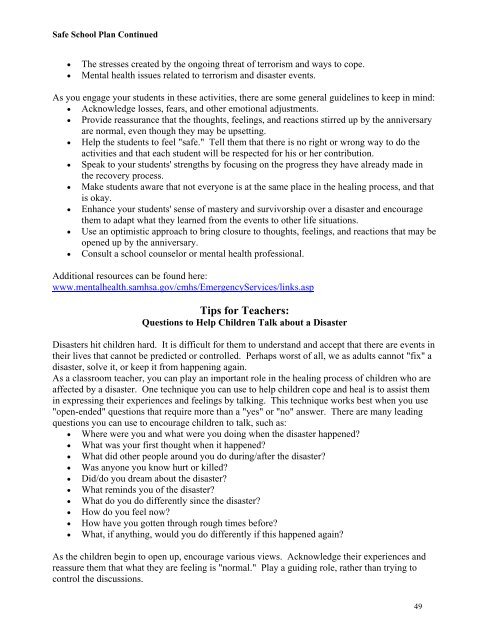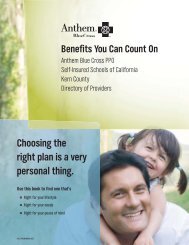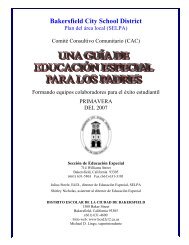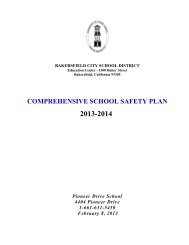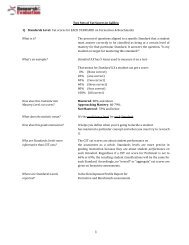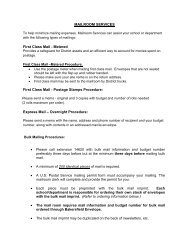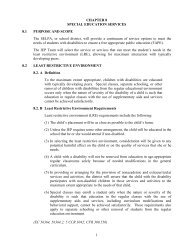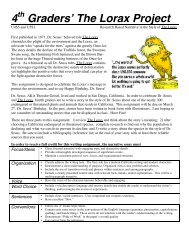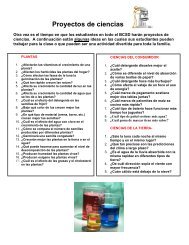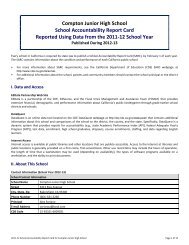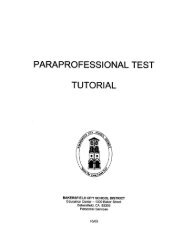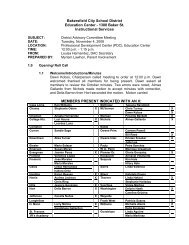Thorner - BCSD Static Server - Bakersfield City School District
Thorner - BCSD Static Server - Bakersfield City School District
Thorner - BCSD Static Server - Bakersfield City School District
Create successful ePaper yourself
Turn your PDF publications into a flip-book with our unique Google optimized e-Paper software.
Safe <strong>School</strong> Plan ContinuedThe stresses created by the ongoing threat of terrorism and ways to cope.Mental health issues related to terrorism and disaster events.As you engage your students in these activities, there are some general guidelines to keep in mind: Acknowledge losses, fears, and other emotional adjustments. Provide reassurance that the thoughts, feelings, and reactions stirred up by the anniversaryare normal, even though they may be upsetting. Help the students to feel "safe." Tell them that there is no right or wrong way to do theactivities and that each student will be respected for his or her contribution. Speak to your students' strengths by focusing on the progress they have already made inthe recovery process. Make students aware that not everyone is at the same place in the healing process, and thatis okay. Enhance your students' sense of mastery and survivorship over a disaster and encouragethem to adapt what they learned from the events to other life situations. Use an optimistic approach to bring closure to thoughts, feelings, and reactions that may beopened up by the anniversary. Consult a school counselor or mental health professional.Additional resources can be found here:www.mentalhealth.samhsa.gov/cmhs/EmergencyServices/links.aspTips for Teachers:Questions to Help Children Talk about a DisasterDisasters hit children hard. It is difficult for them to understand and accept that there are events intheir lives that cannot be predicted or controlled. Perhaps worst of all, we as adults cannot "fix" adisaster, solve it, or keep it from happening again.As a classroom teacher, you can play an important role in the healing process of children who areaffected by a disaster. One technique you can use to help children cope and heal is to assist themin expressing their experiences and feelings by talking. This technique works best when you use"open-ended" questions that require more than a "yes" or "no" answer. There are many leadingquestions you can use to encourage children to talk, such as: Where were you and what were you doing when the disaster happened? What was your first thought when it happened? What did other people around you do during/after the disaster? Was anyone you know hurt or killed? Did/do you dream about the disaster? What reminds you of the disaster? What do you do differently since the disaster? How do you feel now? How have you gotten through rough times before? What, if anything, would you do differently if this happened again?As the children begin to open up, encourage various views. Acknowledge their experiences andreassure them that what they are feeling is "normal." Play a guiding role, rather than trying tocontrol the discussions.49


